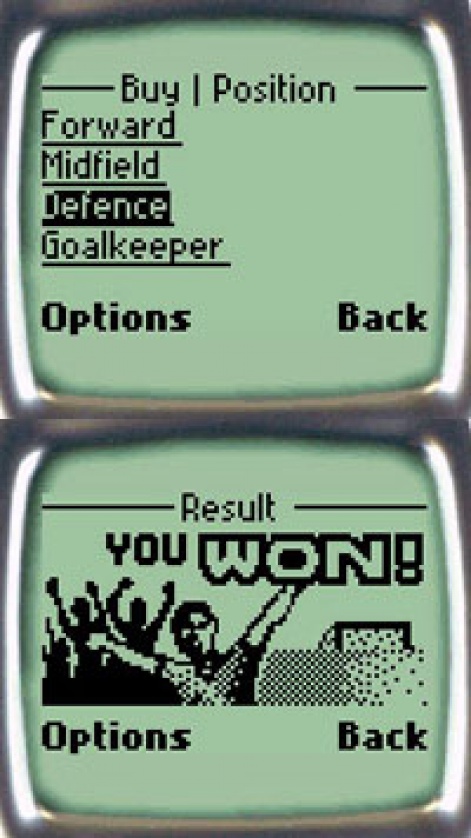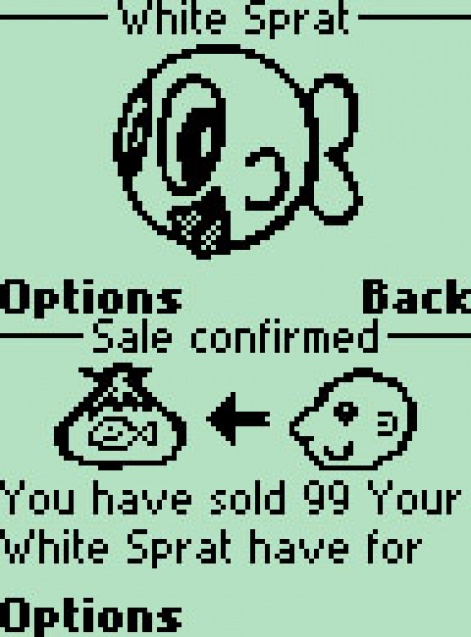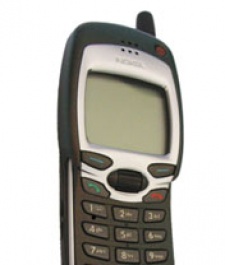Youre falling asleep in the middle of a business meeting. Your phone starts to vibrate. Tentatively you retrieve it from an inside pocket and check the screen.
It reads Enemy units inbound. ETA 30 seconds. Press 1 for standard defence or '2' to take control. You look around. Sorry, Ive got to take this, you mutter as you hurry out the room.
OK, so its only a fantasy. But if the evangelists of WAP gaming are to be believed, massively multiplayer persistent worlds that can call you when youre being attacked could be occurring on your phone before the end of the year.
Over hyped, over here
At the moment, it's hard to ignore the buzz surrounding WAP. From surfing the BTCellnet to banking and even finding the location of the nearest public toilet, internet-enabled mobile phones are the consumer device of the moment. And the hypes only going to get worse.
By the start of 2001, the majority of mobile phones will be WAP-enabled, allowing users to surf any number of the specially designed websites that are springing up.
An entry-level WAP mobile phone is already available for £80 and a recent guestimate puts the total by 2006 at around 700 million. Yet the worry for mobile phone manufacturers and networks is whether the general public will actually want to use such tiny screens and difficult interfaces to send emails to friends in Australia.
Where they need for WAP to succeed is sticky content that will encourage users to spend more time using their phones. One key target is games (at least until the devices are sufficiently powerful to download porn and mp3s).

As Johan Lenander (pictured), the CEO of Swedish WAP games startup Picofun puts it, We believe entertainment will be a killer application for mobile internet and that in three years time entertainment will account for at least 50 per cent of the operators' revenues.
It's only when you realise that industry sources predict that by 2006 the business generated by the mobile internet will be a staggering $340 billion that the whole picture comes together.
For games developers and publishers struggling through the current transitional console war period, developing games for such devices could be a win-win situation. Not only are they extremely quick to make, but the potential benefits are lucrative.
More importantly, these new revenue streams can be generated easily, thanks to the way users pay for their mobile phones (itemised monthly bills or top up cards). Gamers don't need to hand over their credit card deals or pay subscription fees.
This is the reason that Infogramess Bruno Bonnell is talking WAP, Sega Europes new online company Dreamarena has announced its interest in the format and UbiSoft has set up a company called Ludi WAP, which it will use to leverage brands such as Rayman and its newly acquired F1 license on mobile devices.

Of course, the only problem is obvious to anyone who has actually used a WAP phone. The screens are tiny, the devices stupid and the data transfer rate (9.6kbps) nothing to phone home about.
I think that there's going to be a big wave of disappointment when people first get their WAP phones says Kevin Bradshaw (pictured), CEO of wireless games channel Digital Bridges. People will be expecting something better, because it has been badly advertised.
Its generally reckoned, however, that by the end of the year, it will be possible to buy a phone with a colour screen that will be at least three time faster than current phones. Until then many developers are using WAP to test the water. In the parlance of the Wild West, its the only card game in town.

First wave of games
Harry Holwood, Pure Entertainment's CEO, explains, My personal view is there has been a lot of noise about WAP and it's nonsense if you look at how powerful a WAP phone is. The advantage is it's connected to a telephone network and so you can receive up-to-the-minute information.
Like many developers, Pures first foray into the world of mobile gaming is to integrate WAP components into an online football management game. Set to launch at the start of next season, the realism-based fantasy football game will allow you to make changes to your team and receive the results immediately.
Other football management-based offerings are expected to include titles from French developer In-Fusio for Cellnet, a Terry Venables-licensed game from SCi, and a title from Picofun.
Rapidly expanding publisher Rage is positioning itself aggressively in the market. It has enthusiastically welcomed WAP as part of its newly established Rage On-Line division. It too is working on a football management game, thanks to its recent acquisition of the Internet Football Club (IFC). It has also signed an exclusive content agreement with Orange to provide the network with three titles.
The first of these is an adventure called Airlock. Set in a mysteriously deserted space station, it allows gamers to experience a strong feeling of deja vu as they are taken back to gameplay reminiscence of classic text-based adventures on the ZX-81.
Using basic commands such as north, south, east and west to move through the game and an inventory for holding items, Airlock also boasts some simple bitmap graphics to provide ambience.
It's interesting to play for about five minutes, but youd have to be hardcore to play it for the twenty to thirty minutes Rage reckons it should take to finish.
Most annoying is the fact that due to the limitations of the phone, the pace of the game is controlled by the speed at which it sends your buttons presses to the server and then receives the next batch of information.
At best, each keystroke takes a couple of seconds, although it can be longer and obviously relies on quality of network coverage.

According to Kevin Bradshaw, this can be down to the browser software in the phone. What we've found is that it's the speed of the network isn't necessarily the problem, he explains. It's the speed of the browser being able to render the graphics. Second generation WAP phones will have faster browsers.
It seems clear that WAP games will only succeed for the mass market if developers can maximise the advantages of phones while avoiding their inherent limitations.
"The problem is you can't do much client-side processing on the phone," says Holwood. It's almost like teletext. That means it's not very good for things like animations but it's fine for things with a big data store. It would be ideal for MUDs and in fact one of that products we are looking at is a big text-based MUD.
Another genre suited to WAP phones is a Pokemon-style breeding and trading game.
Cambridge-based interactive TV developer nGame has just launched its imaginatively titled massively multiplayer Alien Fish Exchange game with American network AT&T. It expects announce European deals soon.
Making the most of phones graphical capabilities with its cartoon style, players are initially presented with a quantity of grey sprats, the game's basic currency.
Over time some of these evolve into coloured sprats, which can then be bred into more exotic varieties of fish or sold in the exchange for more grey sprats. However, the more exotic the fish, the more nurturing is required to keep them alive and the more grey sprats it will need to consume each day.
Designing games for WAP phones isn't just about the specific content though. Far more important is the issue of how games are presented to mobile phone users.
Digital Bridges, for example, has emphasised the importance of game structure such as lobby services by developing an all-encompassing server environment, UNITY, in which its game developed.
There's a company we are talking to and they have made two WAP games, says Bradshaw. They are very nice games but each requires its own login and user ID. There's no interconnection between them. And while this is probably OK for two games, there is a point at which it stops working if there is no interconnection. It absolutely doesn't work with ten games.
Entry of the big boys

Despite the UKs obvious historical advantages in developing games for limited memory computers, the sheer potential of the mobile gaming market means that there are plenty of other companies preparing to enter.
One of the biggest is handset giant Nokia which launched its Mobile Entertainment Service at E3 2000. The Java-based development environment is designed to ensure that key services such as login, registration, chat rooms and player matching are consistently dealt with.
According to a Nokia spokesman at E3 it found plenty of people interested in signing up to its developers programme.
Interestingly, despite possessing in-house teams in Australia and Hungary, the first wave of titles for Nokia were developed by UK specialist Oxford Softworks. It quickly transferred its specialist skills honed on games such as chess, bridge and backgammon into eight surprisingly playable if generic WAP games. Rage also developed its WAP games using Nokia's technology.
Nokia is our big competitor on the server side, agrees a sanguine Bradshaw, despite the fact that Digital Bridges currently has a staff of 19 while the Finnish company is one of the biggest emerging technology firms in the world.
He remains optimistic however. Our server is finished and we have 20 games and they've live, he says with a grin.
It's certainly something of a David and Goliath situation, but maybe technology will even up the situation this time. Goliath finds himself hosting a board meeting. His phone vibrates. He retrieves it from his cloak and checks the screen. It reads Small stone inbound. ETA 30 seconds. Press 1 to take control. Sorry, Bill, you were saying, Goliath says puts his phone away...























